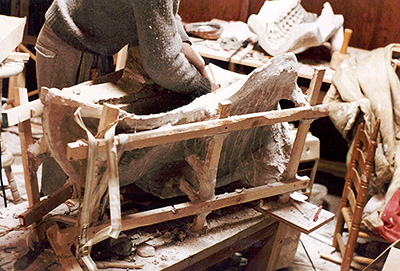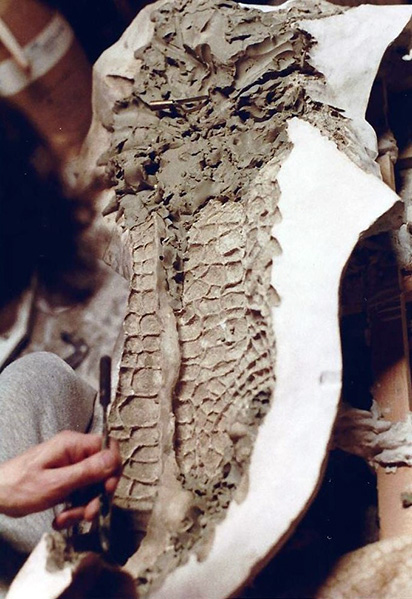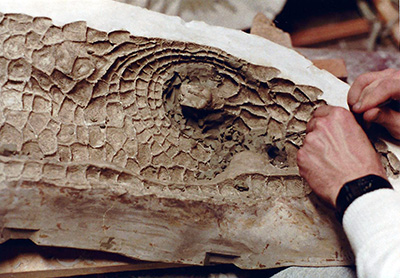|
 |
|
 |
 |
BILLY PAINSTAKINGLY CLEANED THE CLAY OUT OF THE MOULDS TO BE SURE THEY MADE CLEAN IMPRESSIONS, TAKING CARE NOT TO DAMAGE THE THIN WALLS THAT WERE MEANT TO SEPARATE THE DRAGON'S SCALES. Travis watched Billy carefully remove clay from the mould for about an hour while they talked about what came next and how Billy would use the finished moulds to make the dragon's head from a special kind of foam rubber. They talking about Long-Grin's tusks, eyes, the color of the dragon's scales and belly, all the things Travis required for the practical dragon's final appearance. Billy kept notes and Travis suggested samples he thought might be helpful, but the cleaning of the mould was a tedious operation, and unable to help, Travis left Billy to it. Keep in mind that Travis and Billy began work on Long-Grin's head in 1984, before news of the 1983 discovery of a fossil Baryonyx was made public in a 1987 BBC documentary. In fact, Billy's efforts to clean his moulds looks very much like the work undertaken by the London Natural History Museum's paleontolgists who took six years to recover, clean, and identify the Baryonyx fossil remains. Return to the LONG-GRIN LEGACY for more of the evolution and development of LONG-GRIN -- or skip ahead to learn more about the Baryonyx lurking in the dragon's family tree. |
 |
 |
| BACK | HOME | NEXT |
|---|